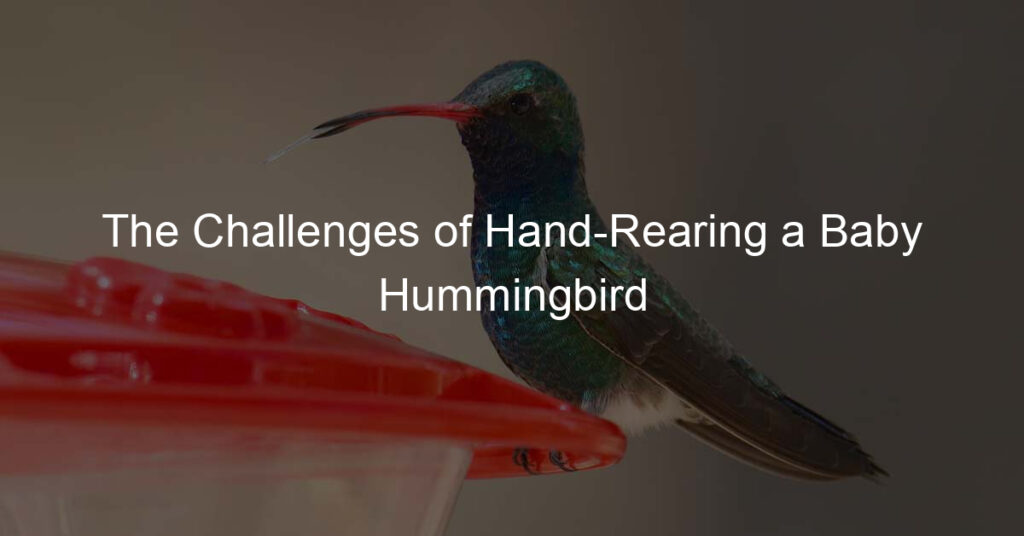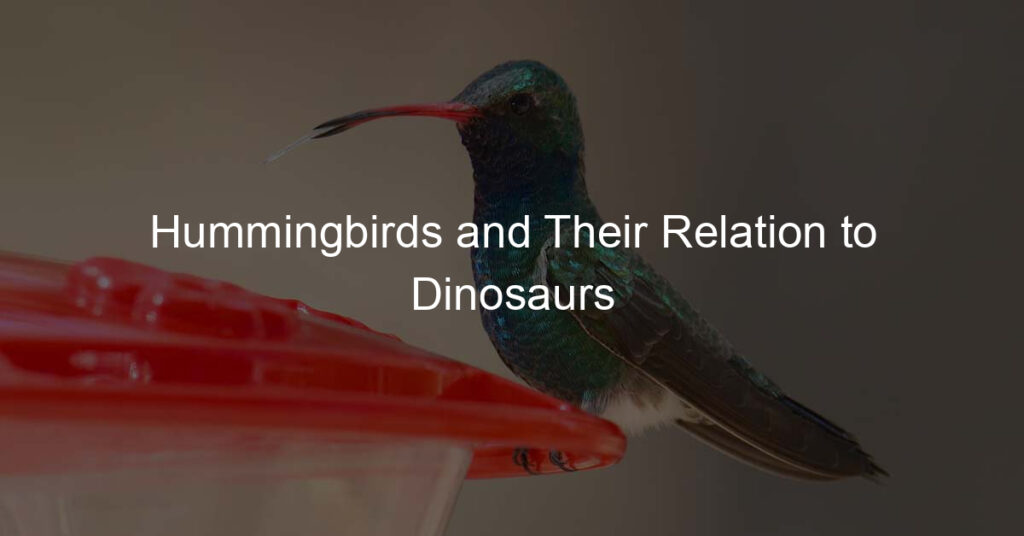Introduction: Hummingbirds and Ecosystems
Hummingbirds, with their vibrant colors and rapid wing movements, are a fascinating sight to behold. But beyond their beauty, these tiny creatures play a crucial role in our ecosystems. This article provides an overview of hummingbirds and discusses their importance in maintaining ecological balance.
Overview of Hummingbirds
Hummingbirds are small birds known for their extraordinary flying skills and vibrant colors. They belong to the family Trochilidae, which includes over 300 species. These birds are native to the Americas and are particularly abundant in tropical rainforests. Wikipedia provides a comprehensive overview of their taxonomy, behavior, and distribution.
Hummingbirds are unique in their ability to hover in mid-air, fly backwards, and even upside-down. This is due to their rapid wing-flapping rates, which can reach up to 80 times per second. They are also known for their long, slender bills and tongues, which they use to extract nectar from flowers.
Importance of Hummingbirds in Ecosystems
Hummingbirds play a vital role in ecosystems, particularly in pollination. As they move from flower to flower to feed on nectar, they inadvertently carry pollen on their beaks and feathers, aiding in the reproduction of plants.
Moreover, hummingbirds are a key part of the food chain. They serve as prey for larger birds, mammals, and reptiles, contributing to the balance of predator-prey relationships in their habitats. They also feed on insects and spiders, helping control these populations.
Lastly, hummingbirds contribute to the health of forests. By pollinating plants, they aid in the production of fruits and seeds, which are essential for the survival of various animal species and for forest regeneration.
In conclusion, hummingbirds are not just beautiful creatures to observe. They are integral components of our ecosystems, contributing to biodiversity and ecological balance. As we move forward, it is essential to understand and protect these tiny avian wonders and the crucial roles they play in our world.
The Ecological Importance of Hummingbirds
Hummingbirds, with their vibrant colors and rapid wing movements, are more than just a visual delight. They play a significant role in maintaining the balance of our ecosystems. One of the key ways they contribute is through pollination.
Hummingbird Pollination
Hummingbirds are among nature’s most efficient pollinators. Let’s delve into how they pollinate and the impact of their pollination on plant diversity.
How Hummingbirds Pollinate
Hummingbirds feed on nectar, a sweet liquid found inside certain flowers. As they hover over a flower to drink nectar, pollen grains from the flower’s anthers stick to the bird’s beak and feathers. When the hummingbird moves to the next flower, some of these pollen grains rub off on the new flower’s stigma, resulting in pollination. This process is vital for the reproduction of many plant species. [source]
Impact of Hummingbird Pollination on Plant Diversity
Hummingbird pollination is crucial for plant diversity. As they move from flower to flower, they help cross-pollinate plants, leading to a greater variety of plants in an area. This diversity is essential for a healthy and balanced ecosystem. For instance, in the tropical rainforests, hummingbird pollination contributes to the rich plant biodiversity that supports a wide range of animal species. [source]
In conclusion, the ecological importance of hummingbirds is immense. Through their pollination, they help maintain and enhance plant diversity, contributing significantly to the health of our ecosystems.
Hummingbirds and Biodiversity
Hummingbirds play a significant role in promoting biodiversity. Their unique characteristics and behaviors contribute to the health and diversity of our ecosystems. Let’s delve into their role and a case study that highlights their importance.
Role of Hummingbirds in Promoting Biodiversity
Hummingbirds are known for their vibrant colors and rapid wing movements. But beyond their beauty, they play a critical role in promoting biodiversity. As they move from flower to flower, they carry pollen on their beaks and feathers, aiding in plant reproduction. This process, known as pollination, is vital for the survival of many plant species.
Moreover, hummingbirds have a preference for brightly colored, tubular flowers that other pollinators cannot access. This specialization allows for the existence of plant species that rely solely on hummingbirds for reproduction, thereby increasing plant diversity in an ecosystem. In addition, the nectar that hummingbirds consume provides them with the energy they need to sustain their high metabolism, creating a beneficial relationship between the birds and the plants they pollinate.
Case Study: Hummingbirds and Tropical Forests
Hummingbirds are particularly important in tropical forests, where biodiversity is high. A study conducted in the tropical forests of Costa Rica found that hummingbirds are responsible for pollinating approximately 25% of the local flora. This is a significant contribution to the biodiversity of these forests.
The study also showed that the absence of hummingbirds in certain areas led to a decrease in the number of certain plant species. This indicates that hummingbirds play a crucial role in maintaining the diversity and health of tropical ecosystems. [source]
In conclusion, hummingbirds are more than just beautiful creatures. They are vital contributors to biodiversity, playing a key role in plant reproduction and the survival of various plant species. Their importance is especially evident in tropical forests, where they contribute significantly to the rich diversity of plant life. As we continue to learn about these fascinating birds, it becomes increasingly clear that protecting them is essential for maintaining the health and diversity of our ecosystems.
Hummingbirds in Food Chains
Hummingbirds, with their vibrant colors and rapid wing movements, are an integral part of food chains. They play a dual role, acting both as prey and predators. Let’s delve into understanding their role as prey.
Hummingbirds as Prey
Despite their speed and agility, hummingbirds are not exempt from becoming prey. They are targeted by a variety of predators, which can significantly impact their populations.
Common Predators of Hummingbirds
Hummingbirds have several natural predators, including cats, snakes, and larger birds such as hawks and owls. Even spiders and praying mantises have been known to prey on these small birds. Wikipedia provides a comprehensive list of hummingbird predators.
Impact of Predation on Hummingbird Populations
Predation can significantly impact hummingbird populations. Predators often target nests, consuming eggs or young birds. This can lead to a decrease in the number of hummingbirds in a given area. However, hummingbirds have developed various strategies to protect themselves and their offspring, such as building nests in hard-to-reach places.
In conclusion, while hummingbirds are small and seemingly delicate, they are a vital link in the food chain. Their role as prey helps to maintain the balance of ecosystems, demonstrating the interconnectedness of all species.
Hummingbirds as Predators
While hummingbirds are often seen as delicate creatures, they also play the role of predators in the ecosystem. Let’s delve into their predatory habits and their impact on insect populations.
Common Prey of Hummingbirds
Hummingbirds primarily feed on nectar, but they also consume small insects and spiders for protein. These include fruit flies, gnats, and mosquitoes. They are adept hunters, using their sharp, elongated beaks and fast flight speeds to catch their prey. They can even catch insects mid-air, a feat known as ‘hawking’. [source]
Impact of Hummingbirds on Insect Populations
Hummingbirds play a significant role in controlling insect populations. By preying on insects, they help maintain a balance in the ecosystem. For instance, they help control mosquito populations, which can carry diseases. Additionally, their consumption of aphids aids in protecting plants, as aphids are known to damage crops and garden plants. [source]
In conclusion, hummingbirds, while small in size, have a significant impact on their ecosystems. They not only contribute to pollination but also help maintain a balance in insect populations. Understanding their role as predators gives us a fuller picture of their importance in our ecosystems.
Hummingbird Species and Ecosystems
Hummingbirds, known for their vibrant colors and rapid wing movement, are a diverse group of species. They have adapted to thrive in a variety of ecosystems, from the arid deserts to the lush tropics. Let’s explore how these adaptations enable them to survive and thrive in such different environments.
Adaptations of Hummingbirds to Different Ecosystems
Hummingbirds have developed unique adaptations to survive in different ecosystems. Their small size, rapid wing movement, and specialized beaks allow them to access food sources that other birds cannot. Let’s delve into the specifics of how hummingbirds have adapted to desert and tropical ecosystems.
Hummingbirds in Desert Ecosystems
Desert ecosystems are harsh environments with extreme temperatures and scarce water. Yet, some hummingbird species, like the Costa’s Hummingbird, have adapted to thrive in these conditions. They have a high tolerance for heat and can go into a state of torpor, a deep sleep-like state, to conserve energy during the hottest parts of the day or during the cold desert nights. Their diet mainly consists of nectar from desert plants, which provides them with much-needed water and energy.
Hummingbirds in Tropical Ecosystems
Tropical ecosystems, on the other hand, are rich in biodiversity. Hummingbirds, such as the Violet-crowned Woodnymph, have adapted to these environments by developing specialized beaks and tongues to extract nectar from a wide variety of flowers. They also have a high metabolism to keep up with the energy demands of their active lifestyle in the tropics. Their vibrant colors also serve as camouflage, blending in with the colorful tropical flowers.
In conclusion, hummingbirds are a fascinating example of how species can adapt to different ecosystems. Whether it’s the arid desert or the lush tropics, these tiny birds have found ways to survive and thrive. The next time you see a hummingbird, take a moment to appreciate its remarkable adaptations.
Impact of Different Hummingbird Species on Ecosystems
Hummingbirds, despite their small size, play a significant role in the health of our ecosystems. Let’s delve into two specific species: the Ruby-Throated Hummingbird and the Anna’s Hummingbird, to better understand their impact.
Case Study: The Ruby-Throated Hummingbird
The Ruby-Throated Hummingbird is a common species found in North America. These birds play a crucial role in the ecosystem by pollinating flowers as they feed on nectar. This process aids in the reproduction of plants, contributing to biodiversity.
Moreover, they control insect populations by feeding on small insects and spiders. This helps maintain a balance in the ecosystem, preventing overpopulation of these small creatures.
Case Study: The Anna’s Hummingbird
The Anna’s Hummingbird is native to the west coast of North America. Similar to the Ruby-Throated Hummingbird, they are also pollinators. They have a preference for red and orange flowers, and their feeding habits help these plants reproduce.
Anna’s Hummingbirds also feed on insects and spiders, contributing to pest control. Their presence in an ecosystem indicates a healthy environment, as they require specific conditions to thrive.
In conclusion, both the Ruby-Throated and Anna’s Hummingbirds play vital roles in their ecosystems. They contribute to plant reproduction, insect control, and overall biodiversity. By understanding their impact, we can appreciate the importance of these tiny creatures and the need to protect their habitats.
Hummingbirds and Environmental Balance
Hummingbirds play a crucial role in maintaining the environmental balance of our planet. Their unique feeding habits and high energy needs contribute significantly to the health of various ecosystems. Let’s delve deeper into the role and impact of these fascinating creatures.
Role of Hummingbirds in Maintaining Environmental Balance
Hummingbirds, with their exceptional flying skills and high metabolism, are nature’s perfect pollinators. They feed on nectar from flowers, and in the process, they transfer pollen from one flower to another, aiding in plant reproduction. This pollination process is vital for the survival of many plant species, some of which are solely dependent on hummingbirds for reproduction. Wikipedia provides an in-depth look at the life and habits of these remarkable birds.
Impact of Hummingbirds on Ecosystem Health
Hummingbirds have a positive impact on ecosystem health. Their pollination activities promote plant diversity, which in turn supports a variety of wildlife. This biodiversity is key to a healthy and balanced ecosystem. Moreover, hummingbirds also control insect populations by feeding on them, especially during breeding seasons. This natural pest control contributes to the overall health of the ecosystem.
In conclusion, hummingbirds play an integral role in maintaining environmental balance. Their pollination activities promote plant diversity and contribute to the health of ecosystems. By understanding and appreciating the role of these birds, we can better appreciate the intricate balance of nature and the importance of every creature in maintaining it.
Conclusion: The Vital Role of Hummingbirds in Our Ecosystems
As we reach the end of our journey exploring the fascinating world of hummingbirds, it’s clear that these tiny creatures play a significant role in our ecosystems. Let’s summarize our key findings and discuss the importance of conserving these vibrant birds.
Summary of Key Points
Hummingbirds, despite their small size, are vital contributors to our ecosystems. They are pollinators, helping plants to reproduce by transferring pollen from one flower to another. They also play a crucial role in the food chain, serving as prey for larger animals and helping to control insect populations by feeding on them.
There are over 300 species of hummingbirds, each uniquely adapted to their specific environment. They help maintain environmental balance by contributing to biodiversity, which is essential for a healthy and resilient ecosystem.
Importance of Conserving Hummingbirds
Hummingbirds face numerous threats, including habitat loss, climate change, and invasive species. Their conservation is vital not only for their survival but also for the overall health of our ecosystems. By protecting hummingbirds, we are also safeguarding the plants they pollinate and the animals that rely on them for food.
Conservation efforts can range from creating hummingbird-friendly gardens, supporting policies that protect their habitats, to raising awareness about their importance. Remember, every action counts when it comes to preserving these remarkable birds and the ecosystems they support.
In conclusion, hummingbirds are more than just beautiful creatures to admire. They are ecological superheroes, working tirelessly to keep our ecosystems functioning. Let’s do our part to ensure these tiny wonders continue to flutter in our world, spreading beauty and life wherever they go.






